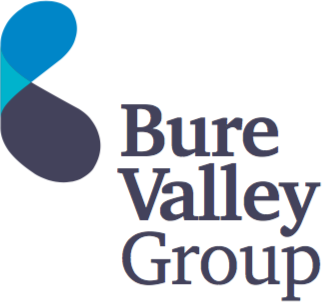Robotics continues to make exciting, innovative strides in 2024. In this industry report, we chart today’s global robotics market and highlight important recent trends, key players, rising stars, risks and opportunities for investors in this dynamic sector. We hope these insights are useful as you consider your portfolio strategy.
Market Overview: Robotics
The robotics market is bigger than human-like machines from sci-fi films. It encompasses a whole industry of robotics systems and technologies, such as industrial robotics (e.g. on car manufacturing lines) and military robots.
The global market is significant. In 2023, it was valued at $67.9bn, and this year it is projected to reach $78.4 billion. By 2029, it could reach $165.2bn – representing a compound annual growth rate (CAGR) of 16.1%.
Robotics can be categorised into multiple market segments. By end-user, the categories are vast, including industrial, medical, retail, logistics, military and construction. By type, robotics largely fall into two camps: personal/domestic and professional.
The market is also divided by application, such as material handling, security and surveillance, inspection and maintenance, and more. Robotic solutions can be mobile or fixed (stationary) and may be further categorised by component – i.e. hardware, software and services.
By geography, Asia remains the biggest region for the robotics market. In 2023, 70% of new robots were installed here. This was followed by 17% in Europe and 10% in the Americas.
Key Features & Market Trends
A range of factors are driving the continued growth of robotics worldwide. Service robots are leading the market and will likely continue until 2029. This does not primarily refer to the specialised industrial robots used in factories (although these are important). Rather, service (or “professional”) robots have diverse functions and forms, often focused on performing menial, dangerous, time-consuming or repetitive tasks.
Automating these business functions gives human workers more freedom to work on safer cognitive tasks. A key example is the defence sector. Increasingly, airborne robots (UAVs or unmanned aerial vehicles) are piloted remotely by human operators to deliver payloads to far-flung targets.
In other sectors, such as agriculture construction, robotic innovations are increasingly used in challenging tasks like bricklaying, demolition and crop planting. There is also a rising demand for domestic robots. In 2024, the household robot market is estimated at $12.04bn but is set to grow to $81.49 billion by 2035 (19% CAGR). The rising life expectancy of national populations partly drives demand, with more people wanting robots that provide assistance, entertainment and companionship.
Security and navigation demand also play a key role in driving the robotics market. Premises need guarding, and people need to be directed to their destinations. Security robots can offer solutions by fulfilling surveillance and patrolling functions, and field robots can use sensors like cameras, lidar and GPS to perceive and navigate their surroundings.
Key Players & New Entrants
There are, of course, many large established players in the global robotics market. Many of them are concentrated in Japan, including FANUC CORPORATION, Yaskawa Electric Corporation and Mitsubishi Electric Corporation.
However, other nations, such as Germany (KUKA AG and Durr Group) and Switzerland (ABB), also boast some innovative robotics stocks. The US has Dover Corporation, and Demark has Universal Robots A/S.
Amidst these large players, some exciting startups have been emerging in the robotics space. The UK, in particular, has been a key hub. An interesting example is CMR Surgical, a startup based in Cambridge. Founded in 2014, the firm provides robotic surgery solutions for minimal access surgery. Now standing at over 500 employees, CMR Surgical’s last funding round (Series A) raised $20.3m and recently gained U.S. FDA Marketing Authorization for its next-generation Versius Surgical System.
Another fascinating case study is Fieldworks Robotics, another Cambridge-based startup that started in 2017 and focuses on the manufacturing of autonomous harvesting robots. Its latest funding round (seed) raised $1.9m and is now partnering with Costa Group to launch its new AI-enabled model (the Fieldworker 1), which harvests fruit and vegetables at the same speed and quality as human workers.
Risks & Opportunities
Robotics startups face a high initial hurdle due to the capital-intensive nature of development. This can put young companies under great strain at the beginning. Barriers from regulations can also exist, especially in sectors like healthcare and autonomous vehicles, where safety concerns are present. A third factor for investors to consider is technology risk. A sudden rapid advance could leave certain robotics solutions obsolete.
With those risks mentioned, robotics can also offer some exciting opportunities for portfolio enhancement. This is a rapidly growing sector, particularly due to the rise of “Industry 5.0”, which is innovating in the combination of human creativity with the capabilities of machines. In the Asia Pacific regio, this has played a key role in driving industrial robotics growth – especially with the rise in automotive manufacturing plants.
Automation with robotics can significantly reduce operational costs and increase productivity, creating demand for robotic solutions. Many companies involved in robotics are innovative startups or tech leaders with high growth rates, offering opportunities for substantial returns. Finally, robotics has a global reach, with markets emerging in regions like Asia, Europe and North America, creating diversified investment opportunities.
If you are interested in expanding your portfolio into these kinds of exciting spheres of investing, then we invite you to get in touch with us here at Bure Valley and consider joining our exclusive investor network:
+44 160 334 0827


